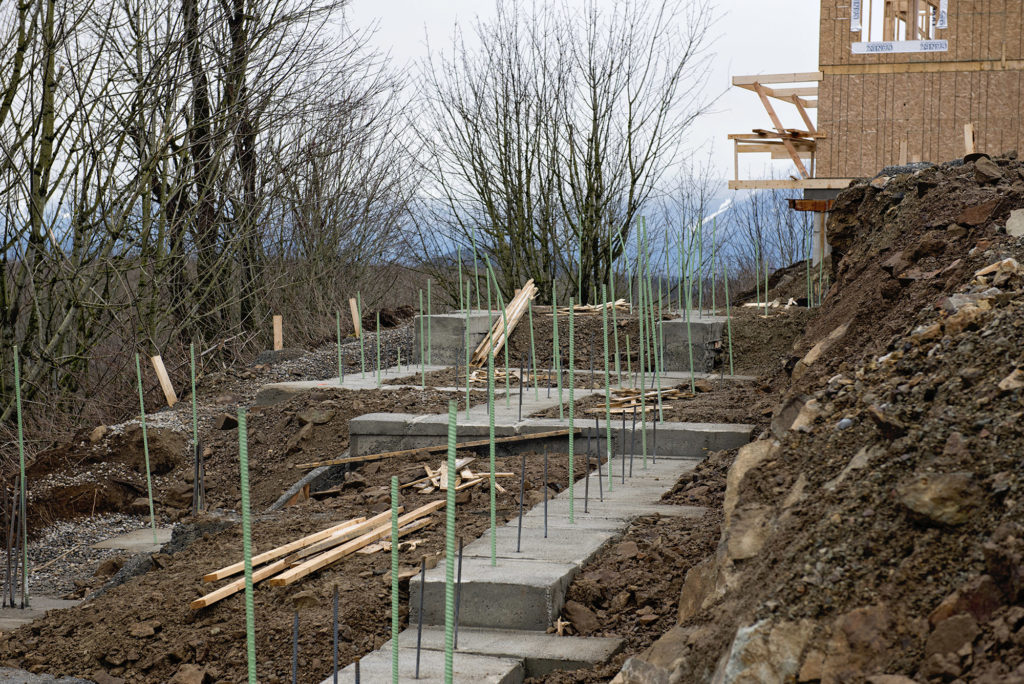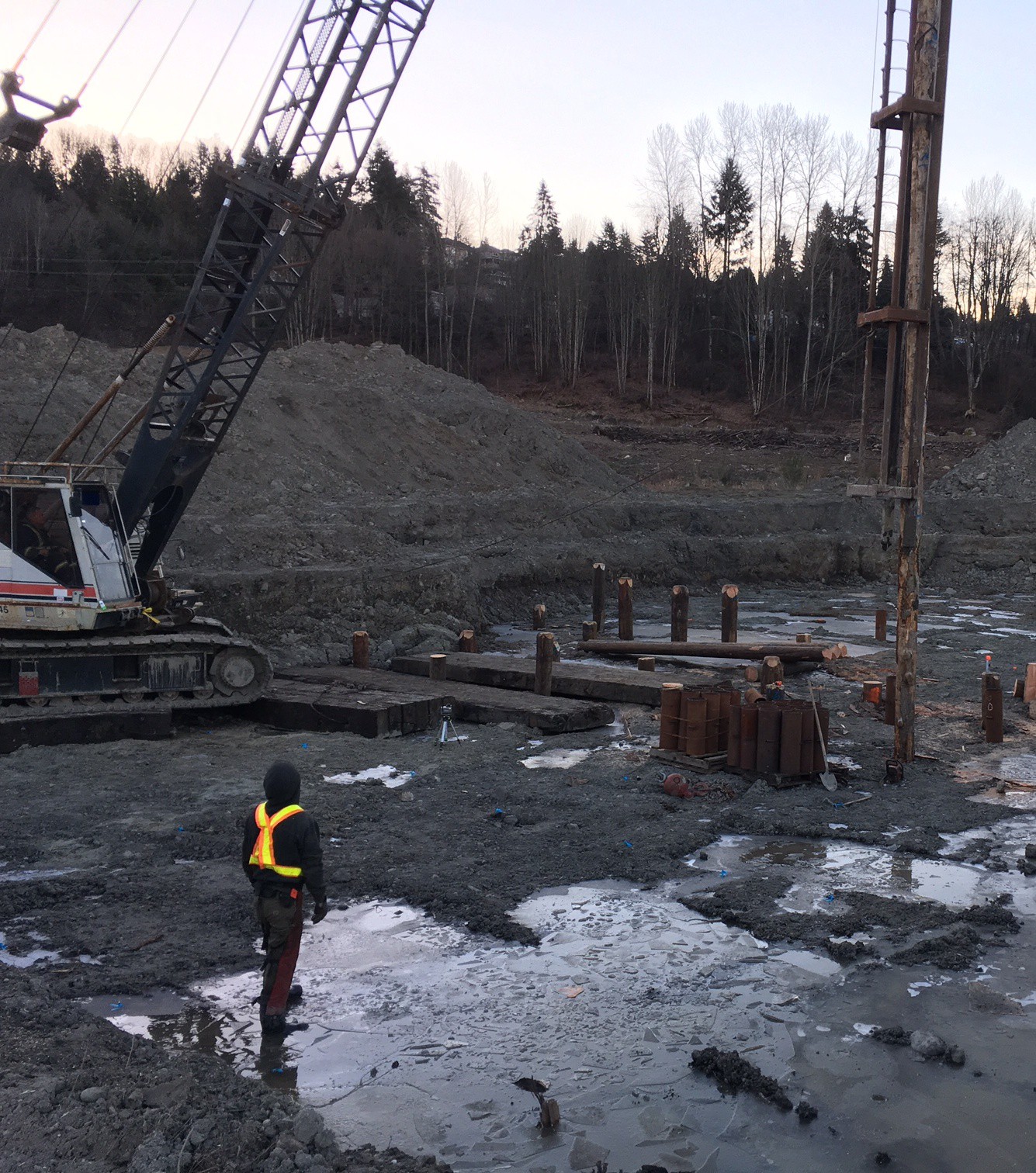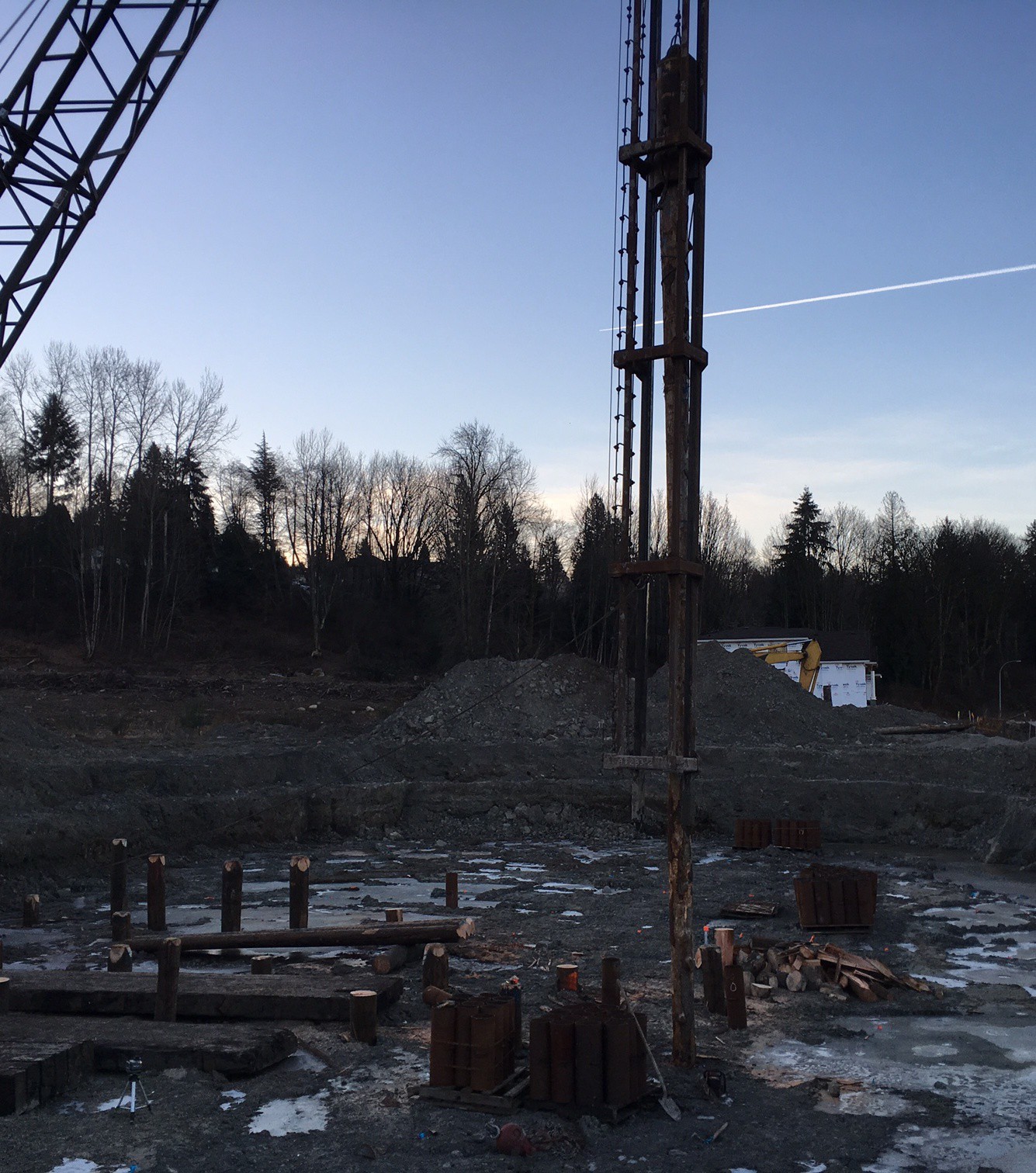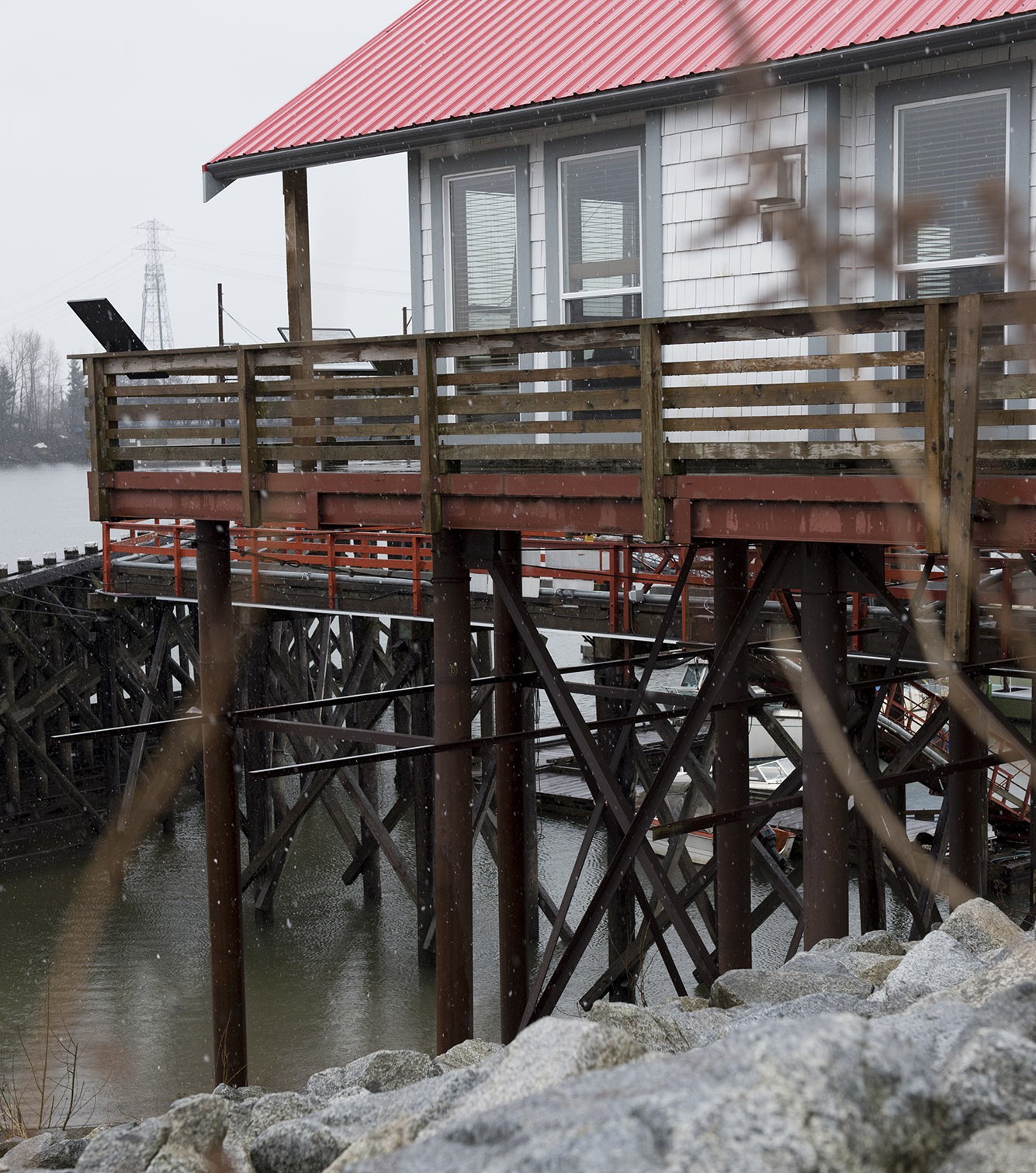At the base of every structure is the foundation. Foundations are a vital element in any project because the whole structure relies on its durability. There are many different foundation styles that exist, but all of them are responsible for transferring the load of the building or structure to the underlying soil. At Valley Geo we assess the characteristics of the soil; type, consolidation, depth, composition, and others factors, in order to understand the ability of the soil to carry the load of the structure. The structure of the project and the characteristics of the soil determines the design of either a Shallow or Deep Foundation. The soil may also require Soil Improvement Techniques to improve the carrying capacity.
Shallow Foundations
 Often seen in residential homes, Shallow foundations are those that transmit the structural loads to the near-surface soil. There are two types of Shallow foundations; Strip Footings and Mats. Strip footing is an enlargement at the bottom of a column or bearing wall. This enlargement spreads the load over a certain area of soil. The shape and dimension of the footing depends on the underlying characteristics of the soil and ground water. Another type is Mat Foundation. The Mat’s enlargement is not individual to a column but is one large piece under the entire structure. Due to its distribution of weight over a larger area this decreases the stress on the soil. The continuity of the enlargement makes Mats particularly useful in areas sensitive to seismic activity. They are also used on structures that are too heavy for spread footings but not heavy enough for a Deep Foundation.
Often seen in residential homes, Shallow foundations are those that transmit the structural loads to the near-surface soil. There are two types of Shallow foundations; Strip Footings and Mats. Strip footing is an enlargement at the bottom of a column or bearing wall. This enlargement spreads the load over a certain area of soil. The shape and dimension of the footing depends on the underlying characteristics of the soil and ground water. Another type is Mat Foundation. The Mat’s enlargement is not individual to a column but is one large piece under the entire structure. Due to its distribution of weight over a larger area this decreases the stress on the soil. The continuity of the enlargement makes Mats particularly useful in areas sensitive to seismic activity. They are also used on structures that are too heavy for spread footings but not heavy enough for a Deep Foundation.
Deep Foundations
Deep foundations act in a similar way as Shallow Foundations except that they transfer the building loads down deeper into the earth instead of to the near-surface soil. They are commonly used when there are very large design loads, poor soil at shallow depths, or other site-specific constraints. There are three broad categories of Deep Foundations; Piles, Drilled Shafts, and Other Types; includes hybrid methods of the Piles and Drilled Shaft categories. Piles are a method of driving manufactured poles of steel, wood, or concrete into the ground for support. The second type, Drilled Shafts, is the process of drilling down, inserting reinforced steel into the hole, and filling the hole with concrete. The Valley Geo team has implemented many drilled and driven pile foundations for single-family residences, subdivisions, and utility service applications.
Soil Improvement
Soil Improvement is the process where the soil characteristics change through physical action or by creating a composite soil structure. These techniques are vital when the demand of the structure is greater than the carrying capacity of the soil. At Valley Geo, we are familiar with many different soil improvement techniques. Some techniques include;
- Removal & Replacement:
- Excavation of unsuitable soils and replacement with new compacted fill.
- Preloading:
- Temporarily, surcharge fill; any load that creates a vertical pressure on the ground surface, covers the natural soil allowing the soil underneath to settle and for construction to once again occur. This particular technique is useful in soft clayey and silty soils because as the fill is putting pressure on them they consolidate together creating a stronger soil.
- In-situ densification:
- Process of using strong vibrations to densify sandy soils.
- Grouting:
- The injection of grout into the ground to improve the soil.
- Stabilization using Admixtures:
- Admixtures create an artificial cementation of the soil which increases the soils strength. The most common admixture is Portland cement, others include asphalt and lime.
- Reinforcement:
- Tensile reinforcement materials improve stability and load-carrying capacity of the soil. The most common type is plastic grids due to their durability and minimal cost.



